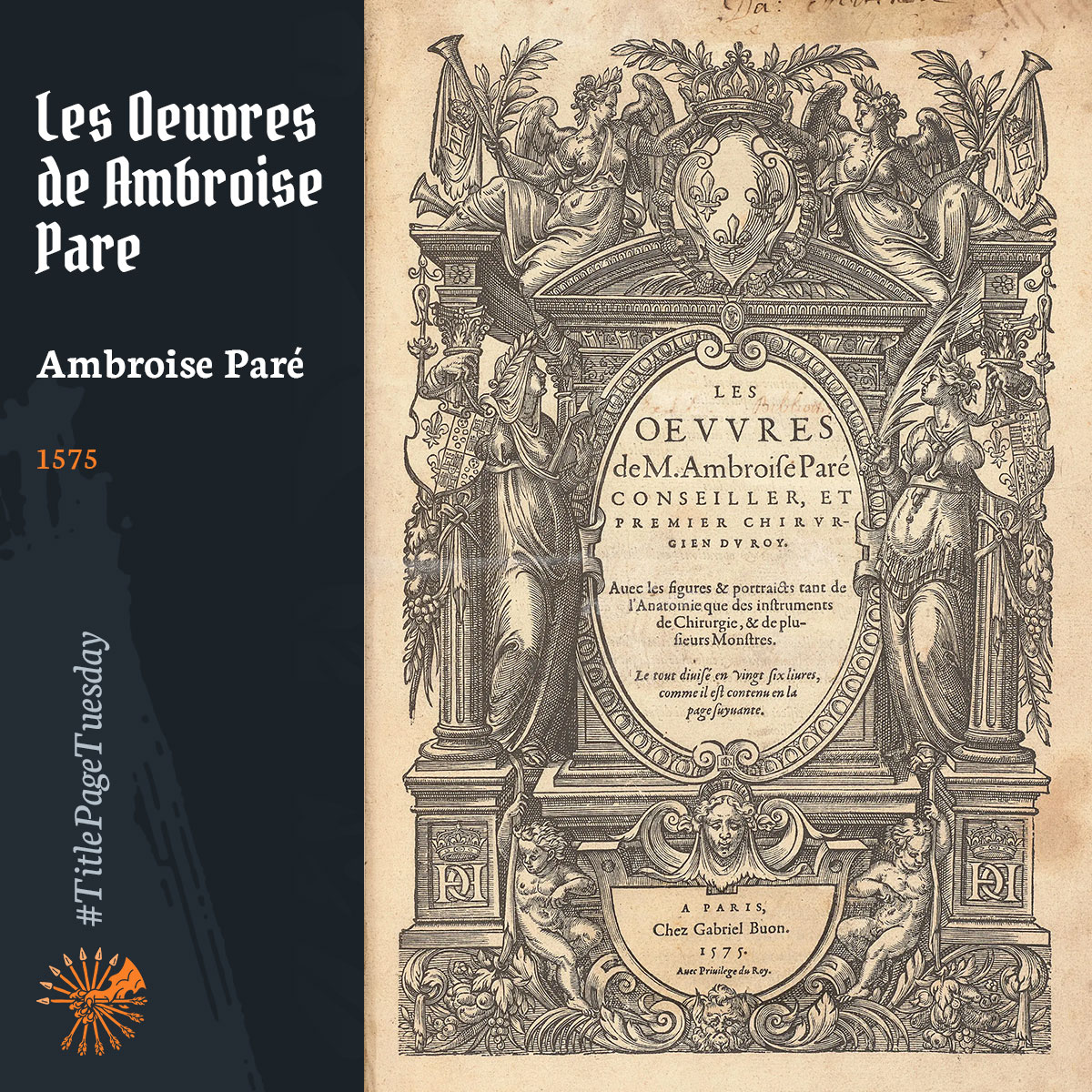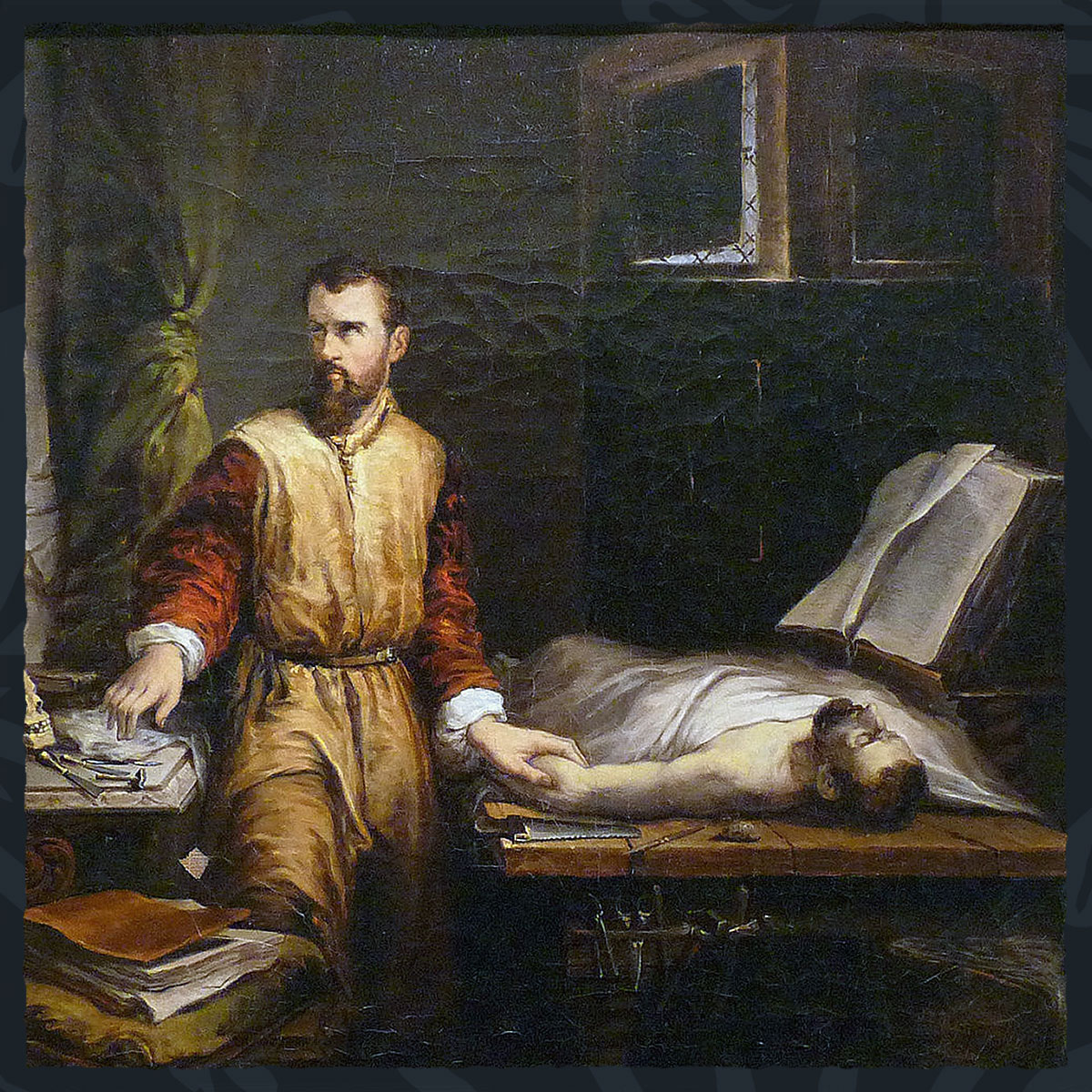
Les Oeuvres d’Ambroise Paré: The Legacy of a Pioneer in Surgery
Ambroise Paré, born in 1510 in Laval, France, is widely regarded as one of the most influential surgeons of the sixteenth century. His pioneering work in battlefield medicine and surgical procedures revolutionized the way surgery was practiced and understood during the Renaissance. By the time of his death in 1590, Paré had fundamentally changed the field of surgery, moving it away from its medieval roots and into a more modern, scientifically grounded discipline. His most famous work, Les Oeuvres, first published in 1575, is a collection of his shorter treatises, encompassing the full breadth of his experience and innovations.
The world of medicine in the sixteenth century was drastically different from today’s modern practices. There were clear distinctions between medical doctors, who were highly educated and focused on theoretical knowledge, and surgeons, who were often regarded as manual laborers. While medical doctors rarely performed surgeries, surgeons were the ones who would touch the body, perform invasive procedures, and treat wounds—especially on the battlefield. This divide between theoretical and practical medicine defined the medical landscape in which Paré worked and made his contributions all the more extraordinary.
Ambroise Paré: A Brief Biography
Ambroise Paré did not come from a wealthy or noble background. He trained as a barber-surgeon, a profession that, while essential, was considered far less prestigious than that of a physician. Barber-surgeons were responsible for tasks such as bloodletting, tooth extractions, and the treatment of minor injuries. Unlike medical doctors, who were university-trained and focused on the academic aspects of medicine, barber-surgeons were craftsmen, learning their trade through apprenticeships and hands-on experience.
Paré’s talent and skill quickly set him apart. He served as a military surgeon during several wars in the mid-sixteenth century, where he encountered horrific injuries that pushed him to innovate. His experiences in the field were instrumental in shaping his approach to surgery. Paré was deeply committed to alleviating the suffering of his patients, which often led him to challenge established medical practices.
Les Oeuvres de Ambroise Paré
Published in 1575, Les Oeuvres is a collection of Paré’s shorter works, many of which had been previously published individually throughout his career. The book covers a wide range of medical topics, from wound treatment to the management of surgical procedures, obstetrics, and anatomy. Written in French—rather than the traditional Latin used by academic physicians—Les Oeuvres was accessible to a broader audience, including other surgeons, apprentices, and even patients.
One of Paré’s most famous contributions documented in Les Oeuvres was his rejection of the then-standard practice of treating gunshot wounds with boiling oil. Until Paré’s intervention, it was believed that gunshot wounds were poisonous, and surgeons would cauterize them with boiling oil to “cleanse” the wound. After running out of oil during a battle, Paré applied a mixture of egg yolk, rose oil, and turpentine to treat soldiers’ wounds. To his astonishment, those treated with the mixture fared better than those subjected to the painful oil treatment. This discovery marked a turning point in battlefield surgery and led Paré to abandon cauterization in favor of more humane and effective treatments.
Another key section of Les Oeuvres is dedicated to Paré’s work on amputation and prosthetics. At a time when amputation was one of the only options for soldiers with severe injuries, Paré devised innovative techniques to make the procedure less painful and more successful. He also developed some of the earliest prosthetic limbs, a testament to his concern for both the physical and emotional well-being of his patients. His design for prosthetic hands and legs, many of which used intricate mechanical components, offered hope to those who had lost limbs, providing them with functionality that was previously unimaginable.
Paré’s approach was revolutionary not only because of his technical innovations but also because of his insistence on observing and recording the outcomes of his methods. He was an early advocate of evidence-based medicine, believing that surgical practices should be based on experience and results, not just tradition or academic theory. This pragmatic approach, grounded in compassion for his patients, set him apart from many of his contemporaries.
Medicine in the Sixteenth Century: Doctors vs. Surgeons

To understand the full impact of Paré’s work, it is essential to grasp the distinctions between medical doctors and surgeons in the sixteenth century. Medical doctors, who had formal university training, focused primarily on diagnosing illnesses and prescribing treatments based on the humoral theory of medicine. According to this theory, the body was governed by four humors—blood, phlegm, yellow bile, and black bile—and an imbalance of these humors was believed to be the root cause of disease. Doctors would rarely perform surgeries themselves, instead relying on their understanding of ancient texts and philosophical reasoning to guide their diagnoses.
Surgeons, on the other hand, were regarded as manual laborers. They worked with their hands, performing tasks that were often seen as too crude or unsophisticated for medical doctors. Surgeons treated injuries, conducted amputations, and performed rudimentary surgeries that were usually seen as a last resort. This divide between theory and practice meant that surgeons, like Paré, often had to find practical solutions to problems on their own, without the benefit of formal academic guidance.
Paré’s work blurred the lines between these two professions. He was a practical surgeon, but his methods were informed by a deep understanding of anatomy and a commitment to advancing medical knowledge. His writings in Les Oeuvres addressed the gap between doctors and surgeons, offering a vision of medicine that was both scientifically grounded and deeply humane.
Legacy and Influence
The legacy of Ambroise Paré cannot be overstated. He is often called the father of modern surgery, and his contributions laid the groundwork for many of the surgical techniques we take for granted today. His rejection of harmful traditional practices, like cauterization with boiling oil, and his advocacy for more compassionate methods of treatment fundamentally changed the field of surgery.
Paré’s influence extended far beyond his lifetime. His writings were translated into several languages, and his techniques were adopted by surgeons across Europe. His work on amputation, in particular, became a reference point for military surgeons for centuries to come. Additionally, Paré’s insistence on making medical knowledge accessible to a broader audience, through the use of vernacular language, helped democratize medical education and bridged the gap between academic physicians and practical surgeons.
Ambroise Paré’s impact on medicine is also reflected in his approach to patients. He saw his work not just as a technical skill but as a service to humanity. His concern for the dignity and well-being of his patients, particularly in the design of prosthetics and his emphasis on minimizing pain, set a new standard for surgical care.
Conclusion
Les Oeuvres de Ambroise Paré is a landmark in the history of medicine. Paré’s practical innovations and his commitment to patient care reshaped the field of surgery, bringing it into the modern age. In an era where surgery was seen as the work of laborers rather than educated professionals, Paré challenged this distinction, proving that hands-on experience, innovation, and compassion could revolutionize medical practice.
For anyone interested in the history of medicine, Les Oeuvres offers a window into the turbulent world of sixteenth-century surgery, where battlefield necessity and scientific curiosity collided to create a new vision of what surgery could achieve. Paré’s legacy, rooted in both his technical innovations and his humanism, continues to resonate in modern medicine.
